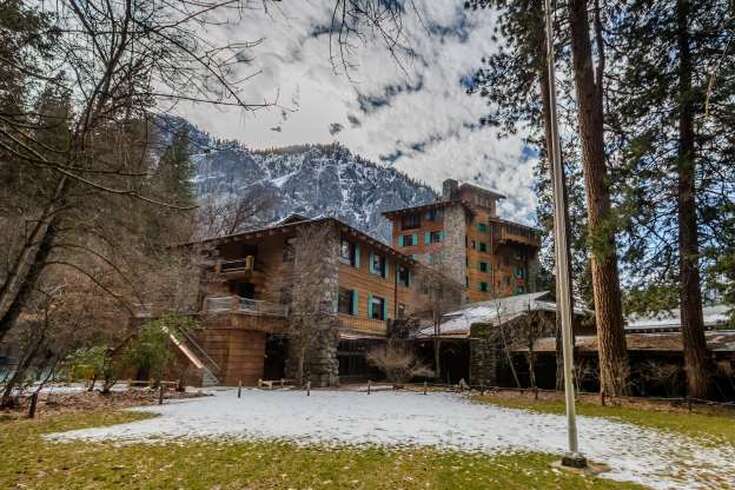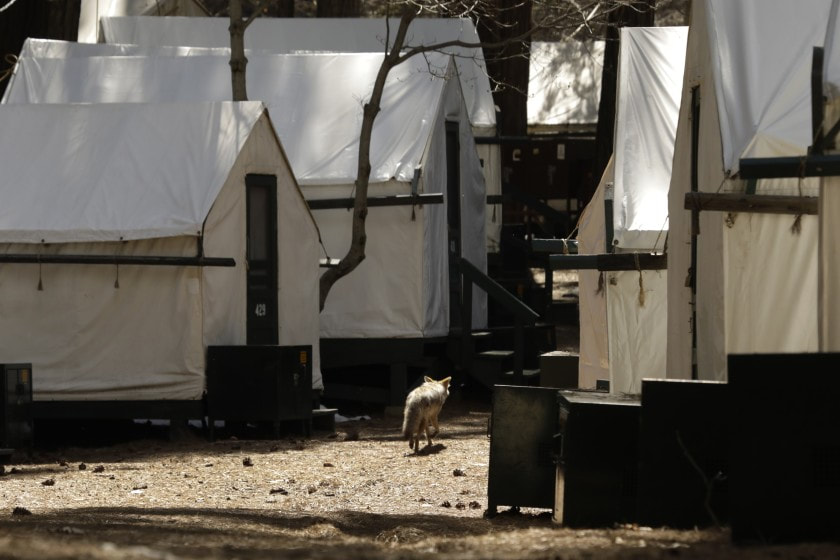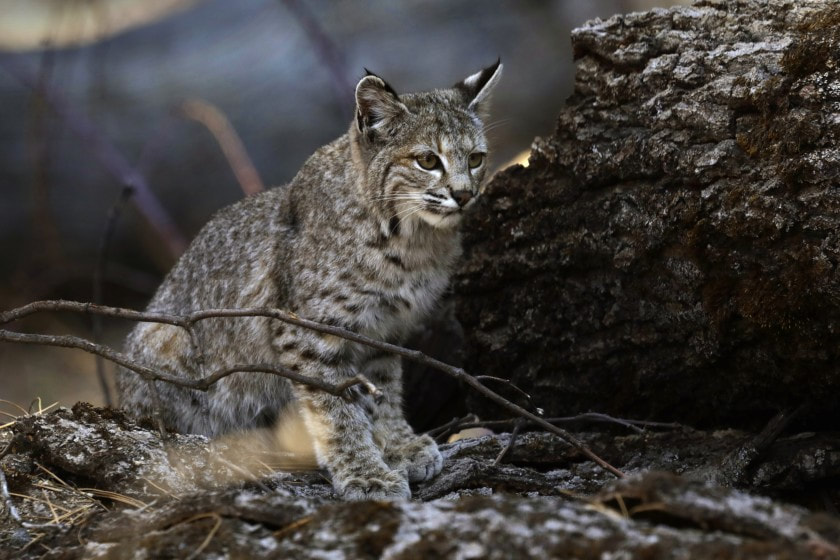WawonaNews.com - May 2020
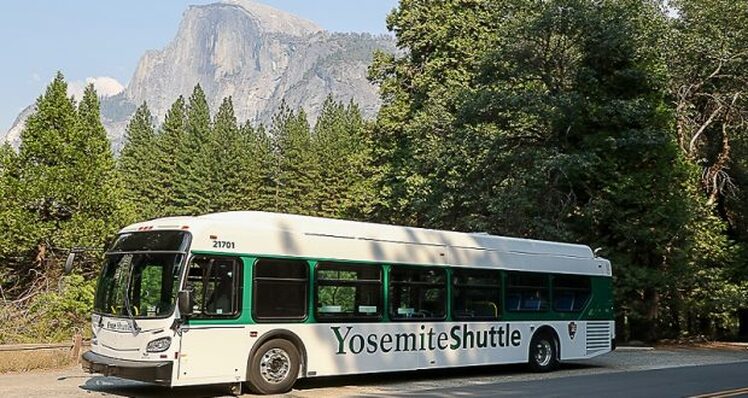
These Yosemite Accommodations Aren’t Expected Back in 2020 When National Park Reopens
A number of concessions in Yosemite National Park are expected to remain closed when the popular California park reopens, according to an internal memo written by union leaders representing Yosemite workers.
Yosemite Valley lodging, restaurants, stables and tours will be affected, either with closures or reduced operations.
The letter was circulated by Yosemite employees and written by union representatives Debra Rockwood and Enrique Fernández for their shop stewards. It outlines what Unite Here Local 19 was reportedly told during a call Thursday with leaders of the park’s concessionaire, Yosemite Hospitality, a subsidiary of Aramark.
An opening date for Yosemite has not been announced. Park officials said they are working on a phased reopening plan for Yosemite, which has been closed to the public since March. Since then, the only announcement by the Park Service and Aramark about a future Yosemite closure is the historic Wawona Hotel staying closed into 2021.
In the meantime, laid-off workers living in Yosemite have been guessing when they will be able to return to work – and if there will be a job available for them when the park reopens.
WHAT WILL BE CLOSED IN YOSEMITE?
If Yosemite does reopen this year, it will be without shuttle buses. About 90 bus drivers and transportation workers were told this week that they have to be out of the park by May 21 – the first reported Yosemite evictions based solely on layoffs caused by the coronavirus pandemic.
The Mountain Room Restaurant at Yosemite Valley Lodge, Degnan’s Loft and Aramark’s mountaineering school and guide service will reportedly be closed in 2020.
According to the union letter, a number of facilities that normally only stay open into the fall will also remain closed this year. That includes horse stables, swimming pools, Housekeeping Camp, Crane Flat store, High Sierra Camps, White Wolf Lodge and Yosemite Valley tour services.
Yosemite officials said this list was not written or disseminated by the Park Service, and that planned closures will be announced when finalized.
CHANGES AT PARK HOTELS
The letter also outlines what’s expected this year with Yosemite lodging:
Yosemite Valley Lodge: The lodge can open with 100% occupancy and its Mountain Room Lounge bar will stay open.
Curry Village: Half of the lodging will be open.
The Ahwahnee: The hotel can fully book, but its dining room will only be for hotel guests, and there won’t be room or valet service.
YOSEMITE EMPLOYEES AND ARAMARK
When asked about the list circulating Friday of Yosemite facilities expected to stay closed, an Aramark corporate spokesman said questions about park reopening plans were best directed at the Park Service.
Earlier Friday, when asked about Yosemite layoffs and evictions, an Aramark spokesman said for those having trouble finding lodging outside the park, the company would help them on a case-by-case basis. The spokesman also said: “Conversations about the reopening of Yosemite are ongoing, however, it’s clear that, when it does, some guest services and offerings will be impacted to protect employees and visitors, as well as help control the spread of COVID-19. These are unprecedented times that, unfortunately, will require incredibly difficult decisions and we are committed to working with and assisting associates affected by them. Like all park enthusiasts, we look forward to resuming operations and welcoming back visitors and employees as soon as it’s safe to do so.”
The union letter, also written Friday, concludes by stating Aramark will start posting bids for jobs (in some cases, moving park workers to new Yosemite positions) and informing affected employees.
Aramark normally employs around 1,200 Yosemite workers. A lower number is expected in 2020.
“No doubt this will be hard on many of our co-workers,” the letter reads. “Yosemite workers are tough. Together you went through floods, fires, governments shutdowns and many different companies. Nothing stopped us from moving forward in ‘our’ Valley.”
A number of concessions in Yosemite National Park are expected to remain closed when the popular California park reopens, according to an internal memo written by union leaders representing Yosemite workers.
Yosemite Valley lodging, restaurants, stables and tours will be affected, either with closures or reduced operations.
The letter was circulated by Yosemite employees and written by union representatives Debra Rockwood and Enrique Fernández for their shop stewards. It outlines what Unite Here Local 19 was reportedly told during a call Thursday with leaders of the park’s concessionaire, Yosemite Hospitality, a subsidiary of Aramark.
An opening date for Yosemite has not been announced. Park officials said they are working on a phased reopening plan for Yosemite, which has been closed to the public since March. Since then, the only announcement by the Park Service and Aramark about a future Yosemite closure is the historic Wawona Hotel staying closed into 2021.
In the meantime, laid-off workers living in Yosemite have been guessing when they will be able to return to work – and if there will be a job available for them when the park reopens.
WHAT WILL BE CLOSED IN YOSEMITE?
If Yosemite does reopen this year, it will be without shuttle buses. About 90 bus drivers and transportation workers were told this week that they have to be out of the park by May 21 – the first reported Yosemite evictions based solely on layoffs caused by the coronavirus pandemic.
The Mountain Room Restaurant at Yosemite Valley Lodge, Degnan’s Loft and Aramark’s mountaineering school and guide service will reportedly be closed in 2020.
According to the union letter, a number of facilities that normally only stay open into the fall will also remain closed this year. That includes horse stables, swimming pools, Housekeeping Camp, Crane Flat store, High Sierra Camps, White Wolf Lodge and Yosemite Valley tour services.
Yosemite officials said this list was not written or disseminated by the Park Service, and that planned closures will be announced when finalized.
CHANGES AT PARK HOTELS
The letter also outlines what’s expected this year with Yosemite lodging:
Yosemite Valley Lodge: The lodge can open with 100% occupancy and its Mountain Room Lounge bar will stay open.
Curry Village: Half of the lodging will be open.
The Ahwahnee: The hotel can fully book, but its dining room will only be for hotel guests, and there won’t be room or valet service.
YOSEMITE EMPLOYEES AND ARAMARK
When asked about the list circulating Friday of Yosemite facilities expected to stay closed, an Aramark corporate spokesman said questions about park reopening plans were best directed at the Park Service.
Earlier Friday, when asked about Yosemite layoffs and evictions, an Aramark spokesman said for those having trouble finding lodging outside the park, the company would help them on a case-by-case basis. The spokesman also said: “Conversations about the reopening of Yosemite are ongoing, however, it’s clear that, when it does, some guest services and offerings will be impacted to protect employees and visitors, as well as help control the spread of COVID-19. These are unprecedented times that, unfortunately, will require incredibly difficult decisions and we are committed to working with and assisting associates affected by them. Like all park enthusiasts, we look forward to resuming operations and welcoming back visitors and employees as soon as it’s safe to do so.”
The union letter, also written Friday, concludes by stating Aramark will start posting bids for jobs (in some cases, moving park workers to new Yosemite positions) and informing affected employees.
Aramark normally employs around 1,200 Yosemite workers. A lower number is expected in 2020.
“No doubt this will be hard on many of our co-workers,” the letter reads. “Yosemite workers are tough. Together you went through floods, fires, governments shutdowns and many different companies. Nothing stopped us from moving forward in ‘our’ Valley.”
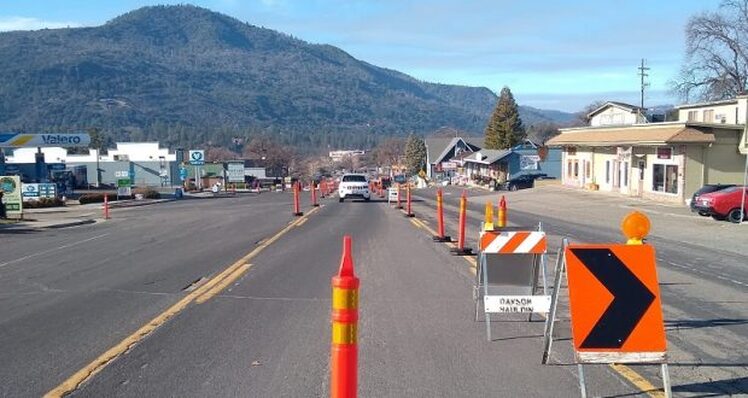
Oakhurst Sewer Line Replacement Project Reaches ‘Cross-Over’
Posted by: SNO Staff May 9, 2020
OAKHURST — Northbound lanes of Highway 41 between the Fresno River and Road 426 have been reopened to traffic, according to the latest update from the Madera County Public Works Department.
“Traffic signals at SR 41/SR 49 and SR 41/Rd 426 intersections will remain on all-way flashing red as required by Caltrans to allow traffic to re-acclimate to the normal traffic pattern,” Friday’s update stated. “Signals are scheduled to return to normal cycle on Monday (May 11).”
The construction work involves replacement of 5,240 feet of the town’s main 12-inch sewer line, which runs below Highway 41.
Work on the sewer main upgrade project has reached the “cross-over point” (near H&L Lumber) and will transition to the opposite side of the highway next week, and continue north towards Hodges Hill Dr.
“The anticipated subsurface conditions on this segment may lead to slower digging operations,” county officials said.
The crossing under Highway 41 has been installed already and will not require future closures of the highway although lane shifts to allow work on the shoulder may be necessary as the work progresses north.
“The continued patience and cooperation from the public and residents is greatly appreciated as we work to complete this much needed infrastructure improvement for the community.”
According to a notice issued earlier this year by the County, work on the project is expected to run through October 2020.
Posted by: SNO Staff May 9, 2020
OAKHURST — Northbound lanes of Highway 41 between the Fresno River and Road 426 have been reopened to traffic, according to the latest update from the Madera County Public Works Department.
“Traffic signals at SR 41/SR 49 and SR 41/Rd 426 intersections will remain on all-way flashing red as required by Caltrans to allow traffic to re-acclimate to the normal traffic pattern,” Friday’s update stated. “Signals are scheduled to return to normal cycle on Monday (May 11).”
The construction work involves replacement of 5,240 feet of the town’s main 12-inch sewer line, which runs below Highway 41.
Work on the sewer main upgrade project has reached the “cross-over point” (near H&L Lumber) and will transition to the opposite side of the highway next week, and continue north towards Hodges Hill Dr.
“The anticipated subsurface conditions on this segment may lead to slower digging operations,” county officials said.
The crossing under Highway 41 has been installed already and will not require future closures of the highway although lane shifts to allow work on the shoulder may be necessary as the work progresses north.
“The continued patience and cooperation from the public and residents is greatly appreciated as we work to complete this much needed infrastructure improvement for the community.”
According to a notice issued earlier this year by the County, work on the project is expected to run through October 2020.
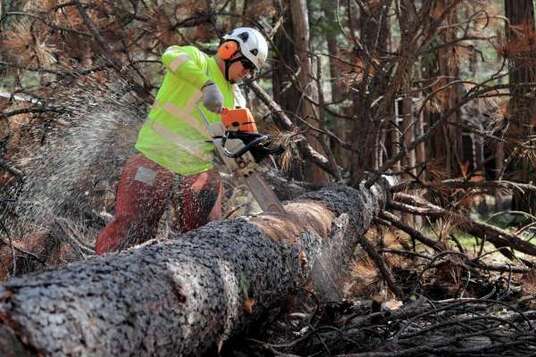
Biomass Removal On Wawona Road
In the next few weeks, contractors will begin hauling an estimated 6.5 million pounds of dead and down trees from along Wawona roads from Alder Creek to the park/forest boundary near Goat Meadow Road. This project removes high fuel loading on the road corridor, helps sequester carbon, and helps protect Wawona, Fish Camp, and the Mariposa Grove as part of an interagency project supported by California Climate Investments and Wildlife Conservation Board.
Delays up to 15 minutes can be expected between 7am to 6pm. Contractors will try to minimize wait times and emergency traffic will be allowed to pass. (G. Dickman)
In the next few weeks, contractors will begin hauling an estimated 6.5 million pounds of dead and down trees from along Wawona roads from Alder Creek to the park/forest boundary near Goat Meadow Road. This project removes high fuel loading on the road corridor, helps sequester carbon, and helps protect Wawona, Fish Camp, and the Mariposa Grove as part of an interagency project supported by California Climate Investments and Wildlife Conservation Board.
Delays up to 15 minutes can be expected between 7am to 6pm. Contractors will try to minimize wait times and emergency traffic will be allowed to pass. (G. Dickman)
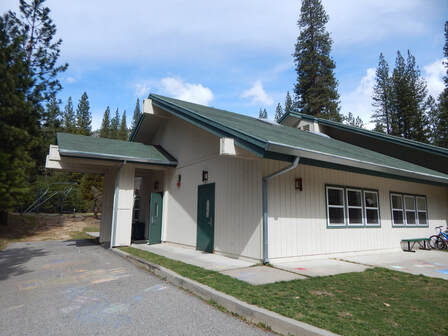
YOSEMITE-WAWONA ELEMENTARY CHARTER SCHOOL
Board of Directors Regular Meeting
Tuesday, May 12, 2020
5:30 P.M.
Wawona Elementary School
7925 Chilnualana Falls Road
Wawona, CA
An On-line Meeting through Zoom
https://csustan.zoom.us/j/98991315860
MONTHLY ITEMS AND FINANCIAL REPORTS
3.1- Approval of Agenda
3.2– Approval of Minutes of the regular meeting of April 21, 2020
3.3–Approve Payroll
3.4- Approve Warrants
3.5 -Accept Donations to YWECS
ACTION ITEMS
INFORMATION ITEMS
Board of Directors Regular Meeting
Tuesday, May 12, 2020
5:30 P.M.
Wawona Elementary School
7925 Chilnualana Falls Road
Wawona, CA
An On-line Meeting through Zoom
https://csustan.zoom.us/j/98991315860
- CALL TO ORDER
- ROLL CALL
MONTHLY ITEMS AND FINANCIAL REPORTS
- CONSENT AGENDA
3.1- Approval of Agenda
3.2– Approval of Minutes of the regular meeting of April 21, 2020
3.3–Approve Payroll
3.4- Approve Warrants
3.5 -Accept Donations to YWECS
- HEARING OF PERSONS WISHING TO ADDRESS THE BOARD
ACTION ITEMS
- APPOINTMENT OF A NEW BOARD OF DIRECTORS MEMBER
INFORMATION ITEMS
- P2 REPORT ON ATTENDANCE
- DEVELOPMENT OF A PLAN FOR SCHOOL RE-OPENING FOR 2020-21
- UPDATE ON YEAR-END REQUIRED DOCUMENTS AND PLAN SUBMITTALS
- STAFF REPORTS
- BOARD MEMBER COMMENTS
- FUTURE AGENDA ITEMS
- NEXT BOARD MEETING
- CLOSED SESSION: Personnel/Negotiations/Litigation
- Personnel (Gov. Code 54957)
- RECONVENE IN OPEN SESSION: Announce Closed Session Actions
- ADJOURNMENT
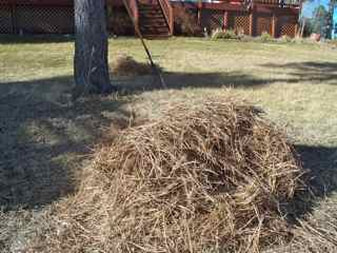
Wawona Pine Needle Pickup 2020 scheduled for the week of June 8th
Your pile must be ready by Monday, June 8. If it is not ready by the time the equipment is in your area, they will not go back and pick up late piles. Remember, one pile per property along the road in front of your property in an unobstructed area where the equipment can easily access your needle pile. Tree limbs and branches must be cut to a maximum of 3 feet in length to be picked up. Only vegetation material will be picked up. No construction materials or large branches, please.
Yosemite National Park, Aramark, & UC Merced properties are not part of the Special Services District and are not included in the pick-up.
If your address is on an out-of-the-way street, you can call or e-mail Samuel Creveny so your needle pile won’t be missed.
Samuel Creveny, (209) 966-5165, Email: [email protected]
Miles Menetrey
Supervisor District 5
Mariposa County
(209) 966 3222
Your pile must be ready by Monday, June 8. If it is not ready by the time the equipment is in your area, they will not go back and pick up late piles. Remember, one pile per property along the road in front of your property in an unobstructed area where the equipment can easily access your needle pile. Tree limbs and branches must be cut to a maximum of 3 feet in length to be picked up. Only vegetation material will be picked up. No construction materials or large branches, please.
Yosemite National Park, Aramark, & UC Merced properties are not part of the Special Services District and are not included in the pick-up.
If your address is on an out-of-the-way street, you can call or e-mail Samuel Creveny so your needle pile won’t be missed.
Samuel Creveny, (209) 966-5165, Email: [email protected]
Miles Menetrey
Supervisor District 5
Mariposa County
(209) 966 3222
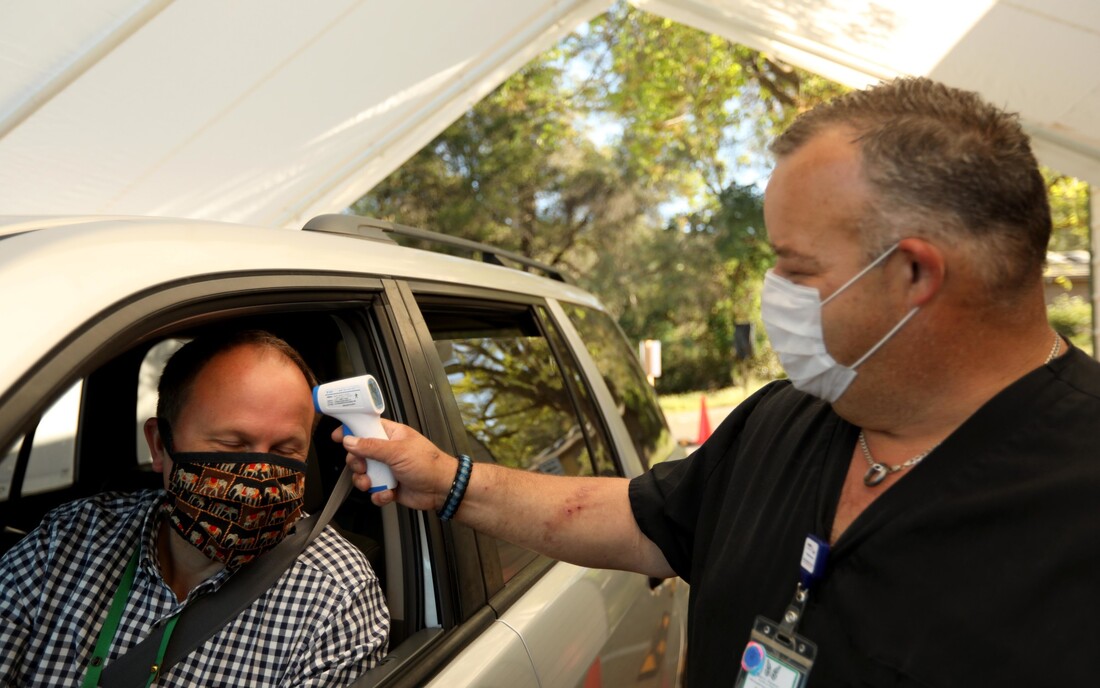
COVID-19 Finally Came. Armed With a Plan, Mariposa County Was Waiting to Fight Back
By KEVIN BAXTER - LA Times
MAY 3
MARIPOSA COUNTY, Calif. —
Dr. Eric Sergienko was already in his office early last Tuesday when his cellphone pinged with the message he had been both expecting and dreading.
A 23-year-old woman in Mariposa County — the scenic, lightly populated mountain community Sergienko serves as health officer — had tested positive for COVID-19. It was 7:13 a.m., a time that has become seared in Sergienko’s memory the way others mark the birth of a child or the initial tremors of an earthquake.
More than 53,000 Californians have tested positive for the novel coronavirus, but in Mariposa County, Tuesday’s result was the first.
Though the case marked the arrival of a potentially deadly pathogen, it also allowed Sergienko to launch a contact-tracing system he had been working on for weeks, one of the final planks of a well-constructed response platform the county has been building for months.
“I like the idea of zero,” Sergienko said hours after the county had lost its perfect record, its initial COVID-19 patient in isolation at home. “But I also like the idea of one because I really do think it’s validation that what you were planning for actually worked.”
If the pandemic’s rapid and deadly spread across the U.S. has exposed government incompetence and lack of preparation in other communities, in Mariposa County the tiny Health and Human Services Agency has offered a textbook example of how to handle a crisis. The county’s first confirmed infection comes at a time of growing protests over stay-at-home orders and demands by other rural California counties that Gov. Gavin Newsom reopen the state.
Mariposa County’s health agency began tracking the virus in December, before many in the country even knew it existed. By mid-January, nearly a week before the first confirmed COVID-19 case in the U.S, a countywide response plan was in place.
And when Gov. Gavin Newsom announced in mid-March that all Californians were being required to stay at home as much as possible, the Mariposa County Sheriff’s Office, utilizing lessons it had learned during the Detwiler fire that swept through the area nearly three years earlier, immediately alerted the county’s 18,000 residents, spread over more than 1,400 square miles, to heed the order.
“Within two hours,” said Joy Shultz, a shopkeeper in Mariposa’s historic city center, “there was no one in town.”
Much of the credit for that goes to Sergienko, a tireless 56-year-old former Navy captain who regularly commuted to his former job in epidemiology at the Centers for Disease Control and Prevention in Atlanta by running the seven miles from home to work. Like Mariposa County’s own version of leading infectious-disease expert Dr. Anthony Fauci, he has loomed large over the local fight against the coronavirus’ spread.
“We were ready for this,” said Chevon Kothari, director of the county’s Health and Human Services Agency. “We worked together as a team during previous disasters, so we already had some of this planning process in place. But in addition, we’ve had the luxury of time to not have cases early on. So we had the ability to plan.”
Sergienko said he first read of COVID-19 on New Year’s Eve, when an international organization that monitors infectious diseases sent an email alert about a strange virus that had emerged in Wuhan, China.
While others ignored the warning, Sergienko alerted Kothari, and two weeks later they informed county supervisors of what could be a danger for a community that sees 4.5 million visitors pass through each year, most on their way to Yosemite National Park, 31 miles to the east.
“The important thing was early recognition. We were already leaning forward and saying, ‘OK, what do we need as a county to be prepared?’” Sergienko said.
“I threw out a bunch of ideas, and people said, ‘Let’s run with this.’”
Mariposa is among California’s smallest counties, and it’s also one of the oldest, dating to 1847 when an agent for John C. Fremont, who would go on to become one of California’s first two senators, mistakenly purchased the desolate Rancho Las Mariposas, then part of Mexico.
A year later, when gold was discovered in Northern California, Mariposa became the southern end of the mother lode and blossomed.
The town has kept that pioneer feel, with the stretch of Highway 140 that splits the center of town resembling a western movie set more than a central business district. Some of the local politicians still wear cowboy hats and bolo ties, but tourism, not gold, drives the economy now.
And that was shut down when Yosemite was closed because of the pandemic in mid-March.
“It’s a ghost town,” said Joan Gamble from behind the counter at Sierra Mercantile, where protective masks are now for sale alongside Yosemite hoodies and tiny carved black bears. “The park closed, the stores closed. Everything. It’s just something we felt we had to do.”
Credit Sergienko for that too. Social distancing wasn’t a difficult sell in a county where the minimum parcel size in rural areas is 5 acres, but he also won people over on the need to wear face coverings and repeatedly wash their hands.
So when the order came to close down business and schools, most people were already on board.
“They are pretty lockstep in [that] they don’t want to open up too soon,” Travis Medlock, who operates a ramen restaurant out of a closed 1950s-style diner, said of the business community. “While the businesses don’t like it, they completely understand.
“They are very concerned of opening the park back up. That is just going to bring the Bay Area, the valley, L.A. up here. We’ve been locked down pretty secure [but] as soon as they open the floodgates there, we’re concerned it’s going to open the floodgates here.”
Medlock said the county has had his back in other ways too, sending office staffers for takeout meals to help his fledgling restaurant stay afloat.
Sergienko, whose quirky, slightly nerdy personality is as infectious as the coronavirus he’s battling, likes to refer to protective bubbles. A bubble can cover a single person or an entire community, but if anything pierces that bubble, it breaks and leaves everyone inside exposed.
That Mariposa’s bubble was strong was evidenced by the fact it is surrounded on all sides by counties with more than 200 cases and half a dozen deaths combined.
Minutes after that bubble finally burst Tuesday morning, Sergienko moved to patch the hole, dispatching a contact-tracing team including two health professionals and a sheriff’s detective as well as a probation officer and an investigator with the district attorney’s office.
They began searching for anyone who may have come in contact with a Mariposa resident who tested positive in a hospital in neighboring Madera County after traveling internationally.
“We really recognized early on we needed to build up a team that was beyond what we had in public health capacity to do,” Kothari said of contact tracing, a key tool in halting the spread of infectious disease. “Who better than people who are used to investigating? So probation officers, D.A. investigators all got trained in contact tracing pretty early.
“Now a lot of counties are emulating that, a lot of counties are pulling in their law enforcement partners to help with that. They’re really good at contact tracing.”
Within hours, 25 people had been identified. When half of those tested positive over the next three days, Sergienko’s team already had them in quarantine, protecting the rest of the community and validating his plan.
“We know where everyone is. So we’ve nipped off that bud of transmission,” said Sergienko, whose county now has 13 confirmed cases. “The team was ready for it. The team stepped up and did what they needed to do.”
With COVID-19 now present in the community, Mariposa County is shoring up other defensive measures. Thursday it opened a testing center in a middle school gym with a goal of administering 132 free tests a day, about five times the recommended number for a population of 18,000.
Another protective measure requires county employees to enter vital information such as body temperature and other symptoms into a phone app each morning, giving the health department more data points to track. Kothari hopes to have all county businesses using the app when the stay-at-home order is lifted.
When that happens, and Mariposa’s main roads again become clogged with summer vacationers headed for Yosemite or weekend visitors taking in the scenery, that will be the next test for the protective bubble Kothari and Sergienko have designed.
Their team is working on a plan for that too.
May Day Greetings - By Tom Bopp
Rangers Help Kids Explore Yosemite Online
FRESNO, Calif. (KFSN) -- You may not be able to visit Yosemite National Park, but you can help your kids explore it online.
Ranger Adam Ramsey is on the lookout for nature during his "Kids Ask Rangers" segment on Yosemite National Park's Facebook page.
"We've gotten some really good ones. Mostly about animals. Kids are just fascinated by wildlife, but some of them have to do with waterfalls. I think my favorite question was when do we turn off the waterfalls, that, was a really cute question," Ramsey said.
Ranger Ramsey and Ranger Anastasia Roy are going online to reach school kids that can't see Yosemite in person, hosting a weekly ranger talk from their home. Since they're quarantining together, they are partnering to make these videos.
"When we ended up working from home, it seemed like a really natural fit to use that format to connect to kids to the park from their homes and help connect with the kids too since we've been missing meeting kids in person," said Roy.
The duo has learned how to turn their home into a makeshift studio.
Every week they talk about a wide variety of subjects from animals to nature in the park. Even sharing what other teams are working on in the park or when they see bears.
Questions are submitted ahead of time by emailing a picture of your child's handwritten question or a recording them and sending it to [email protected]
Kids Ask Rangers is Thursday at 10:30 AM PT on the Yosemite National Park's Facebook page.
"It's an opportunity to hear what kids are curious about and make connections between those curiosities and the same kinds of curiosities a lot of our scientists in the park have," Ranger Roy said.
Kids from around the globe have submitted questions. Even kindergarten classes have joined in
"I think its important to remember if you look outside your window, no matter where you live, there's a little bit of nature right there. We just want to encourage kids to stay looking and stay curious about the outdoors and nature," Ramsey said.
An experience that's bringing the jewel of the national parks system to homes around the world.
Ranger Adam Ramsey is on the lookout for nature during his "Kids Ask Rangers" segment on Yosemite National Park's Facebook page.
"We've gotten some really good ones. Mostly about animals. Kids are just fascinated by wildlife, but some of them have to do with waterfalls. I think my favorite question was when do we turn off the waterfalls, that, was a really cute question," Ramsey said.
Ranger Ramsey and Ranger Anastasia Roy are going online to reach school kids that can't see Yosemite in person, hosting a weekly ranger talk from their home. Since they're quarantining together, they are partnering to make these videos.
"When we ended up working from home, it seemed like a really natural fit to use that format to connect to kids to the park from their homes and help connect with the kids too since we've been missing meeting kids in person," said Roy.
The duo has learned how to turn their home into a makeshift studio.
Every week they talk about a wide variety of subjects from animals to nature in the park. Even sharing what other teams are working on in the park or when they see bears.
Questions are submitted ahead of time by emailing a picture of your child's handwritten question or a recording them and sending it to [email protected]
Kids Ask Rangers is Thursday at 10:30 AM PT on the Yosemite National Park's Facebook page.
"It's an opportunity to hear what kids are curious about and make connections between those curiosities and the same kinds of curiosities a lot of our scientists in the park have," Ranger Roy said.
Kids from around the globe have submitted questions. Even kindergarten classes have joined in
"I think its important to remember if you look outside your window, no matter where you live, there's a little bit of nature right there. We just want to encourage kids to stay looking and stay curious about the outdoors and nature," Ramsey said.
An experience that's bringing the jewel of the national parks system to homes around the world.
U.S. National Parks Could Be Privatized. Here’s What Would Change.

Late last year, when a high-profile proposal to privatize some services at national parks went public, the reaction came quickly.
The Department of the Interior, which manages most federal land, had formed a committee of recreation industry representatives in 2017. In October 2019, the committee proposed privatizing campgrounds, limiting senior discounts, and adding expanded Wi-Fi, food trucks, and Amazon deliveries. The proposal was met with such resistance among environmental groups—and the public—that the department ended the committee less than two months later.
This was merely a flashpoint in a controversial debate that’s been bubbling for decades. The cash-strapped National Park Service (NPS) is saddled with a nearly $12 billion maintenance backlog; the recreation industry has said it can manage some park services better and cheaper. And environmental groups call for close scrutiny of privatization initiatives in order to maintain the original mission of conserving parks and their resources.
Meanwhile, the coronavirus pandemic is disrupting discussion—and might upend the debate altogether.
Should parks be privatized? It’s a thorny question, sparking heated debate since the creation of the first national park.
Some cases of privatization can be called successes. Oklahoma’s Tallgrass Prairie Preserve, for example, protects important plant and wildlife species in large part because the nonprofit Nature Conservancy was able to buy land from willing ranchers when NPS couldn’t finalize a deal. After budget cuts forced Alabama to close a state park in 2015, a company called Recreation Resource Management (RRM) was awarded a contract to reopen and run the park. But privatization often meets with stiff opposition: Recent plans for a massive, privately-funded prairie reserve in Montana have angered locals who feel pushed off the land they’ve worked for generations.
Weighing a stance is especially complicated because privatization itself can take so many forms. There’s no single model; while some protected areas are made up of privatized land, national parks comprise public land that relies on privatized services.
These services—the campgrounds, bathrooms, lodging, catering, equipment rentals, and other amenities needed to operate a park—were the focus of the Interior Department committee’s proposals.
“Does [NPS] really have to operate the lodge? Does it have to operate the campground? Does it need to clean the bathrooms? Does it need to pave the roads?” asks Warren Meyer, owner of RRM, which operates about 150 recreation areas on public lands. “There’s a lot of things in there that it doesn’t necessarily need to do.”
Campgrounds—NPS controls 1,421 of them—often form the front lines of the privatization debate. Meyer says that at a privatized campground, visitors could not only expect regular maintenance but also new amenities: Think glamping, tiny rental homes, and cabins.
But Emily Douce, director of operations and park funding at the National Parks Conservation Association, counters that a park may want to keep running its own campgrounds in order to interact with visitors and keep an eye on operations.
“The presence of a park service ranger has many benefits, from educating to seeing what’s going on and making sure that people are being responsible,” Douce says, adding that the privatization of ranger positions would be a cause for concern.
“Their mandate is to make sure that the resources are protected and that the visitors are educated about that site. And so if you privatize those, there’s a concern there that some of that would be lost,” she says.
Meyer agrees that while private companies could manage some tasks, removing wilderness management or park rangers from NPS hands would be almost impossible.
So who gets to decide? It’s up to each national park to choose what privatization measures are best for both visitor experience and resource management, says Douce. Meyer emphasizes the importance of the public’s ability to weigh in on decisions.
“If the public is not going to retain management of the use and access and character of the land, then they might as well sell it,” he says. “There’s no point in giving that up because once you give that up, why do you even have the land in the first place?”
Uncertain future
The coronavirus outbreak’s influence on the debate remains to be seen.
Right now, federal and state governments are focusing spending on COVID-19 responses. Douce says it’s likely that the NPS’s federal budget for the upcoming fiscal year will remain level compared to last year, though federal funding decisions are far from guaranteed. Another challenge comes from lost park revenue as a result of the pandemic, which could affect the national parks’ already lean maintenance budget.
“We are working with many others to try to influence the stimulus packages [under consideration] to see if we can get the money back to the parks that has been lost and will be lost,” Douce says.
Communities have called Meyer to discuss how to keep state parks open. He says federal agencies could take longer to get to that point, but he expects that financial constraints from COVID-19 will make privatizing services at national parks more enticing. “There’s going to be a lot of pressure to say, ‘Geez, us cleaning the bathrooms of national park campgrounds with civil servants is a luxury. We need to find other ways to do those kinds of things.’”
But it will take time, manpower, a new contract template for concessionaires, and opportunity for public comment—presently a challenge, as such meetings are being postponed because of coronavirus.
To be sure, the government should not make privatization decisions during the pandemic, Douce says. “We need people to be involved,” she says, and right now, “they’re focused on just dealing with everyday changes with the virus.”
Adina Solomon is an Atlanta-based freelance journalist who covers a range of subjects, with specialties in city planning/design, business, and death.
Secrets of Wawona - by Tom Bopp
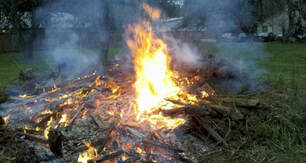
MARIPOSA COUNTY : BURN PERMITS REQUIRED BEGINNING MAY 1
Mariposa County residents can request a Cal Fire permit online at burnpermit.fire.ca.gov or by calling the Mariposa Headquarters, 209-966-3622. Mariposa County residents must check the burn day status by calling the information line, 209-966-1200, or the Mariposa County Air Pollution Control District, 209-966-2220.
For more information, visit the Cal Fire website at fire.ca.gov or ReadyForWildfire.org.
Mariposa County residents can request a Cal Fire permit online at burnpermit.fire.ca.gov or by calling the Mariposa Headquarters, 209-966-3622. Mariposa County residents must check the burn day status by calling the information line, 209-966-1200, or the Mariposa County Air Pollution Control District, 209-966-2220.
For more information, visit the Cal Fire website at fire.ca.gov or ReadyForWildfire.org.
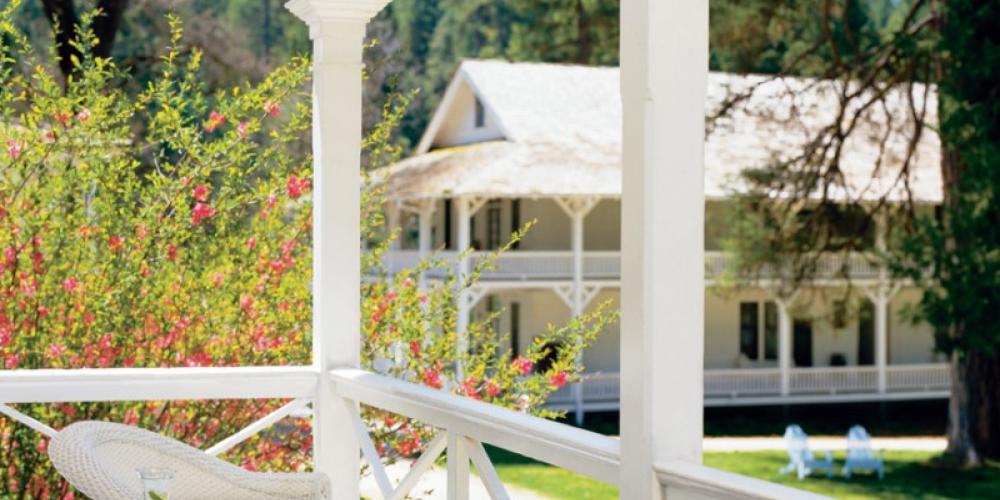
Wawona Hotel To Remain Closed For Upcoming Visitor Season
Electrical Work and Upgrades to be Completed During Closure
The Wawona Hotel in Yosemite National Park will remain closed for the upcoming visitor season in order to complete necessary electrical repairs and upgrades. The Wawona Hotel is generally open to visitors March through November of each year. It is anticipated that the planning and work on the project will be completed and the hotel will reopen to visitors Spring 2021. The National Park Service recently completed an extensive electrical survey with a contractor and it was determined that the current electrical system, dating back to 1917, needs replacement and upgrades for safety and the preservation of the historic buildings.
The National Park Service is in the process of reviewing the complete scope of the work and project timeline. Yosemite Hospitality, authorized concessioner for Wawona Hotel, will continue renovations to the hotel lobby and guest rooms during the closure period. All guests with existing reservations for the Wawona Hotel will be contacted to offer alternative options for their reservations.
The Wawona Hotel was designated a National Historic Landmark on June 2, 1987. Galen Clark began operation of Wawona Hotel, named “Clark’s Station,” in 1856. In 1875, Clark sold “Clark’s Station” to Henry Washburn, who renamed the site Wawona, an Indian word meaning “Big Trees.” Clark Cottage (1876) is the oldest remaining structure in the complex, built prior to the main hotel building, which was constructed in 1879. The most recent additions are the Annex building opened in 1918, and the golf course and swimming tank, which opened in 1918.
-NPS-
Amanda Lee, CHA | Aramark | General Manager | Wawona Hotel & Badger Pass | Yosemite Hospitality
8308 Wawona RD Yosemite National Park, CA 95389
Wawona Hotel: 209.375.1218 Badger Pass: 209.372.8432 M: 435.890.9866
EMAIL [email protected] | WEB www.travelyosemite.com
Media Contacts
Scott Gediman (National Park Service): 209-372-0248
Lisa Cesaro (Yosemite Hospitality): 209-372-1445
Electrical Work and Upgrades to be Completed During Closure
The Wawona Hotel in Yosemite National Park will remain closed for the upcoming visitor season in order to complete necessary electrical repairs and upgrades. The Wawona Hotel is generally open to visitors March through November of each year. It is anticipated that the planning and work on the project will be completed and the hotel will reopen to visitors Spring 2021. The National Park Service recently completed an extensive electrical survey with a contractor and it was determined that the current electrical system, dating back to 1917, needs replacement and upgrades for safety and the preservation of the historic buildings.
The National Park Service is in the process of reviewing the complete scope of the work and project timeline. Yosemite Hospitality, authorized concessioner for Wawona Hotel, will continue renovations to the hotel lobby and guest rooms during the closure period. All guests with existing reservations for the Wawona Hotel will be contacted to offer alternative options for their reservations.
The Wawona Hotel was designated a National Historic Landmark on June 2, 1987. Galen Clark began operation of Wawona Hotel, named “Clark’s Station,” in 1856. In 1875, Clark sold “Clark’s Station” to Henry Washburn, who renamed the site Wawona, an Indian word meaning “Big Trees.” Clark Cottage (1876) is the oldest remaining structure in the complex, built prior to the main hotel building, which was constructed in 1879. The most recent additions are the Annex building opened in 1918, and the golf course and swimming tank, which opened in 1918.
-NPS-
Amanda Lee, CHA | Aramark | General Manager | Wawona Hotel & Badger Pass | Yosemite Hospitality
8308 Wawona RD Yosemite National Park, CA 95389
Wawona Hotel: 209.375.1218 Badger Pass: 209.372.8432 M: 435.890.9866
EMAIL [email protected] | WEB www.travelyosemite.com
Media Contacts
Scott Gediman (National Park Service): 209-372-0248
Lisa Cesaro (Yosemite Hospitality): 209-372-1445
Trump Announces National Parks To Reopen But Doesn't Offer Dates Or Details
Washington (CNN)
President Donald Trump announced Wednesday that national parks and public lands will be reopening following coronavirus-related closures, but it's not clear when the administration will implement the reopenings across states with varying levels of public health restrictions.
"We're starting to open our country again," Trump said during a White House tree planting ceremony marking Earth Day and Arbor Day. "Thanks to our significant progress against the invisible enemy, I'm pleased to announce that in line with my administration's guidelines for opening up America again, we will begin to reopen our national parks and public lands for the American people to enjoy."
Vice President Mike Pence said during the ceremony that the Trump administration would "work closely with governors" to reopen the parks and public lands, "so that the American people can enjoy the blessings of those extraordinary places."
Interior Secretary David Bernhardt tweeted following the announcement that the administration is "committed to working with governors and local public health officials to gradually reopen our National Parks in a safe manner for the American people to once again enjoy."
Operational changes for each specific national park will be provided soon, an Interior spokesperson said.
An Interior official downplayed this as a major new announcement, noting space at some parks has remained open throughout the pandemic.
The official said the Department of the Interior and the National Park Service will work at the state level to open parks as those individual states begin to reopen, but the expectation at the moment is that the administration won't move to open parks before the states they're located in move to at least Phase One of the federal reopening guidelines.
As a result of the coronavirus pandemic, the National Park Service announced earlier this spring that it would make "significant operational changes," which included the closure of "most park buildings, facilities, and restrooms," as well as entire parks in some cases.
The scope of the closures has been wide-ranging and has included some of the system's most visited parks, such as the Grand Canyon National Park, Yellowstone National Park and Zion National Park.
But the closures have not been all-encompassing. For example, certain roads at Zion National Park and the Great Smoky Mountains National Park remain open. And some of Cedar Breaks National Monument remains open to snowmobiles and foot traffic.
In some cases, park closures were preemptive, but in other cases, closures were the result of pressure from residents, lawmakers and public health officials.
Zion remained open until early April, according to The Salt Lake Tribune. The National Park Service closed the site only after receiving a request from Utah's top health official.
The Grand Canyon National Park closed its facilities on April 1, after receiving a request from the health and human services director and chief health officer for Coconino County, which encompasses the park and other nationally protected lands.
CNN's Sarah Westwood and Nikki Carvajal contributed to this report.
April 21st, 2020 - video by Sharon Granoff
Home On The Range - by Tom Bopp
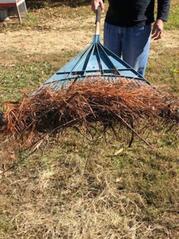
County Needle Pick Up Uncertain
It is as yet unknown if the county will continue with pine needle pick up in Wawona as scheduled. It is unclear if the NPS is in communication with the county about the issue. The likely guidance will be for homeowners to clear their properties for hazard clearance/defensible space, and wait and see if the county picks up the piles.
As of right now, the same guidance requirements are in effect that require property owners to notify the Ranger Office of any service providers coming in to work on private properties.
It is as yet unknown if the county will continue with pine needle pick up in Wawona as scheduled. It is unclear if the NPS is in communication with the county about the issue. The likely guidance will be for homeowners to clear their properties for hazard clearance/defensible space, and wait and see if the county picks up the piles.
As of right now, the same guidance requirements are in effect that require property owners to notify the Ranger Office of any service providers coming in to work on private properties.
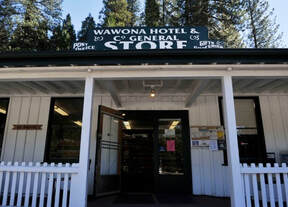
Wawona Store Hours During Park Closure
10AM to 5PM. Closed from 1:15 to 1:45 for lunch.
10AM to 5PM. Closed from 1:15 to 1:45 for lunch.
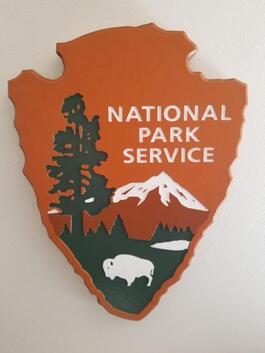
Amendment to Park Correspondence Regarding Private Property Access
The Park IMT understands that access to private homes for the purposes of essential or emergency maintenance may be necessary. It is not our intent to interfere with homeowners ability to maintain the integrity of their homes or prevent personal access. The state Executive Order provides for “Workers such as plumbers, electricians, exterminators, and other service providers who provide services that are necessary to maintaining the safety, sanitation, and essential operation of residences.” If a property owner has a need for a such individual(s) to access their property for necessary repairs, please provide the park with a written letter of "Authorization to Access Property" stating the name and contact information of the property owner, address of the property, name of the individual(s) being granted access, and expected frequency of access. Entrance into the park will be granted with the letter and a valid identification.
It is our intent to provide for the security of all communities in the park including Wawona. The Park Safety Closure (Public Health Emergency) and Public Use Limitation (Public Health Emergency) are in place to protect the park and it's communities. In turn the residents living in Wawona do not want unauthorized and unknown individuals gaining access to their community, putting them at greater risk for COVID exposure, and putting unoccupied homes at risk for theft and vandalism. Thank you for your continued understating and cooperation.
Again, please direct any authorization letter, or questions, to [email protected].
Incident Commander
Yosemite COVID-19 Incident Management Team
Yosemite National Park
The Park IMT understands that access to private homes for the purposes of essential or emergency maintenance may be necessary. It is not our intent to interfere with homeowners ability to maintain the integrity of their homes or prevent personal access. The state Executive Order provides for “Workers such as plumbers, electricians, exterminators, and other service providers who provide services that are necessary to maintaining the safety, sanitation, and essential operation of residences.” If a property owner has a need for a such individual(s) to access their property for necessary repairs, please provide the park with a written letter of "Authorization to Access Property" stating the name and contact information of the property owner, address of the property, name of the individual(s) being granted access, and expected frequency of access. Entrance into the park will be granted with the letter and a valid identification.
It is our intent to provide for the security of all communities in the park including Wawona. The Park Safety Closure (Public Health Emergency) and Public Use Limitation (Public Health Emergency) are in place to protect the park and it's communities. In turn the residents living in Wawona do not want unauthorized and unknown individuals gaining access to their community, putting them at greater risk for COVID exposure, and putting unoccupied homes at risk for theft and vandalism. Thank you for your continued understating and cooperation.
Again, please direct any authorization letter, or questions, to [email protected].
Incident Commander
Yosemite COVID-19 Incident Management Team
Yosemite National Park
Coyotes, bobcats and bears: Wildlife is reclaiming Yosemite National Park
By SUSANNE RUST LA Times STAFF WRITER
APRIL 13, 2020
5 AM
YOSEMITE NATIONAL PARK —
Yosemite Village is normally a crush of humanity and traffic congestion. On Saturday, it was peaceful like few times before — the only sounds coming from the wind and the few local residents.
A young bobcat ambled by the nearly abandoned administrative buildings, while ravens prattled and danced in the empty parking lots, and coyotes trotted along the valley’s empty roads and walkways.
Tourists aren’t allowed in California’s most popular national park, but if they could visit, they might feel as if they had been transported to another time. Either to a previous era, before millions of people started motoring into the valley every year, or to a possible future one, where the artifacts of civilization remain, with fewer humans in the mix.
On March 20, the national park was closed to prevent the spread of the coronavirus — leaving the 7.5-mile-long valley to only a skeleton crew of 100 to 200 park service employees and an unknown number of concessionaire workers.
This month is typically a busy month in Yosemite: Of the almost 4.6 million tourists that visited the valley in 2019, about 308,000 came during April.
But on this spring day, the air was crystal clear — not a hint of diesel or exhaust tainted the sweet, spring breeze. And the valley was nearly silent, except for the rushing waters of the Merced River and the wind blowing through the ponderosa pines.
“You couldn’t ask for a better place to be isolated,” said Warren McClain, a saucier at the Ahwahnee Hotel who has worked in the park since 2017.
He and his co-workers, Dane Peterson and Billy Sanchez, were skateboarding and cycling along Northside Drive, just east of Horsetail Fall, soaking in the bright, warm sun.
Wildlife is coming out of hiding now, they said, as it did during previous government shutdowns of the park — in 1990, 1995, 2013 and 2019. The difference is that this park closure is expected to be the longest on record.
“The bear population has quadrupled,” said Peterson, noting a surge of large megafauna into the fields, thoroughfares and open spaces of the park.
“It’s not like they aren’t usually here,” he said of the bears, bobcats and coyotes that he and other employees now see congregating outside their cabins and apartments. “It’s that they usually hang back at the edges, or move in the shadows.”
Just three days after a snowstorm blanketed the region, spring has come to the valley. The sun was bright, the air clear, and fronds and green sprouts of vegetation burst through the dirt.
A healthy-looking coyote, still adorned in her winter coat, stalked and then captured a fat gray squirrel outside the entrance of Camp Curry. She grabbed the rodent by the neck, shook it and then proceeded to eat it whole, saving the tail for last.
The few employees sheltering in place are taking advantage of the valley’s unimpeded natural amenities. Some are hiking to Mirror Lake and the falls, enjoying trails that are empty aside from the critters.
As of Saturday, the valley was completely free of the virus. Nobody was wearing masks. And social distancing didn’t seem to be happening — except at the Village Market.
APRIL 13, 2020
5 AM
YOSEMITE NATIONAL PARK —
Yosemite Village is normally a crush of humanity and traffic congestion. On Saturday, it was peaceful like few times before — the only sounds coming from the wind and the few local residents.
A young bobcat ambled by the nearly abandoned administrative buildings, while ravens prattled and danced in the empty parking lots, and coyotes trotted along the valley’s empty roads and walkways.
Tourists aren’t allowed in California’s most popular national park, but if they could visit, they might feel as if they had been transported to another time. Either to a previous era, before millions of people started motoring into the valley every year, or to a possible future one, where the artifacts of civilization remain, with fewer humans in the mix.
On March 20, the national park was closed to prevent the spread of the coronavirus — leaving the 7.5-mile-long valley to only a skeleton crew of 100 to 200 park service employees and an unknown number of concessionaire workers.
This month is typically a busy month in Yosemite: Of the almost 4.6 million tourists that visited the valley in 2019, about 308,000 came during April.
But on this spring day, the air was crystal clear — not a hint of diesel or exhaust tainted the sweet, spring breeze. And the valley was nearly silent, except for the rushing waters of the Merced River and the wind blowing through the ponderosa pines.
“You couldn’t ask for a better place to be isolated,” said Warren McClain, a saucier at the Ahwahnee Hotel who has worked in the park since 2017.
He and his co-workers, Dane Peterson and Billy Sanchez, were skateboarding and cycling along Northside Drive, just east of Horsetail Fall, soaking in the bright, warm sun.
Wildlife is coming out of hiding now, they said, as it did during previous government shutdowns of the park — in 1990, 1995, 2013 and 2019. The difference is that this park closure is expected to be the longest on record.
“The bear population has quadrupled,” said Peterson, noting a surge of large megafauna into the fields, thoroughfares and open spaces of the park.
“It’s not like they aren’t usually here,” he said of the bears, bobcats and coyotes that he and other employees now see congregating outside their cabins and apartments. “It’s that they usually hang back at the edges, or move in the shadows.”
Just three days after a snowstorm blanketed the region, spring has come to the valley. The sun was bright, the air clear, and fronds and green sprouts of vegetation burst through the dirt.
A healthy-looking coyote, still adorned in her winter coat, stalked and then captured a fat gray squirrel outside the entrance of Camp Curry. She grabbed the rodent by the neck, shook it and then proceeded to eat it whole, saving the tail for last.
The few employees sheltering in place are taking advantage of the valley’s unimpeded natural amenities. Some are hiking to Mirror Lake and the falls, enjoying trails that are empty aside from the critters.
As of Saturday, the valley was completely free of the virus. Nobody was wearing masks. And social distancing didn’t seem to be happening — except at the Village Market.
Only 10 people at a time are allowed in the small grocery store, and three wash stations are outside the entrance. Customers are required to scrub and disinfect their hands before entering.
“If the virus comes into the valley, it’s going to come through here,” said Ken Concroft, a market employee who was managing the wash stations out front. He said the biggest risk comes from visitors who own property in places such as Foresta and The Redwoods, which are inside the park boundaries.
He and other employees fear “people who are from the city” visiting their second homes and inadvertently bringing the virus with them.
He said three visitors had come in that morning.
“If the virus comes into the valley, it’s going to come through here,” said Ken Concroft, a market employee who was managing the wash stations out front. He said the biggest risk comes from visitors who own property in places such as Foresta and The Redwoods, which are inside the park boundaries.
He and other employees fear “people who are from the city” visiting their second homes and inadvertently bringing the virus with them.
He said three visitors had come in that morning.
Entry at the park gates is permitted only to employees, essential workers and those who can show the deeds to their houses.
The wash stations, social distancing measures and newly installed plexiglass sheets that separate customers from cashiers are all steps the market has taken to prevent the spread of virus in the valley.
Concroft was interested to hear that many stores outside the park are now prohibiting the use of cloth bags, eyeing them as sources of viral transfer.
“We’ll have to consider that, too,” he said. “We’re doing everything we can to keep it out.”
For gateway towns such as Oakhurst, Mariposa and Groveland, Yosemite’s shutdown has hobbled numerous businesses, as it has in communities near other closed national parks. Outside of California, some of those closures have come recently and followed weeks of controversy, in which town leaders accused the Interior Department of being slow to close parks as a protective measure.
Char Miller, a historian at Pomona College, said the park probably was very similar today to how it appeared to visitors in the 19th century.
He referred to journal entries, written by early visitors, such as Alice Ives Van Schaack, who visited Yosemite in 1871 and marveled over its natural wonders and majesty. Upon seeing Yosemite Valley for the first time, she later wrote, “I felt Heaven itself could not be much lovelier.”
Miller said that geological marvels such as El Capitan and Half Dome "remind us of how short our time is here.”
“One thing we can know for sure is that Yosemite is enduring,” he added. “It was here before us, and will remain after we leave.”
The wash stations, social distancing measures and newly installed plexiglass sheets that separate customers from cashiers are all steps the market has taken to prevent the spread of virus in the valley.
Concroft was interested to hear that many stores outside the park are now prohibiting the use of cloth bags, eyeing them as sources of viral transfer.
“We’ll have to consider that, too,” he said. “We’re doing everything we can to keep it out.”
For gateway towns such as Oakhurst, Mariposa and Groveland, Yosemite’s shutdown has hobbled numerous businesses, as it has in communities near other closed national parks. Outside of California, some of those closures have come recently and followed weeks of controversy, in which town leaders accused the Interior Department of being slow to close parks as a protective measure.
Char Miller, a historian at Pomona College, said the park probably was very similar today to how it appeared to visitors in the 19th century.
He referred to journal entries, written by early visitors, such as Alice Ives Van Schaack, who visited Yosemite in 1871 and marveled over its natural wonders and majesty. Upon seeing Yosemite Valley for the first time, she later wrote, “I felt Heaven itself could not be much lovelier.”
Miller said that geological marvels such as El Capitan and Half Dome "remind us of how short our time is here.”
“One thing we can know for sure is that Yosemite is enduring,” he added. “It was here before us, and will remain after we leave.”
